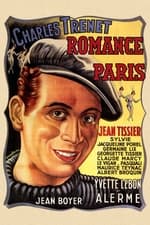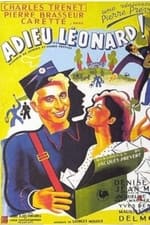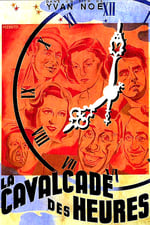Informations personnelles
Célèbre pour Interprétation
Apparitions connues 35
Genre Homme
Date de naissance 18 mai 1913
Date de décès 19 février 2001 (87 ans)
Lieu de naissance Narbonne, Aude, France
Alias
- -
Score de contenu
100
Superbe ! Cette fiche semble complète !
Connectez-vous afin de
signaler un problème.
Biographie
Louis Charles Augustin Georges Trenet (18 May 1913 – 19 February 2001) was a renowned French singer-songwriter who composed both the music and the lyrics to nearly a thousand songs over a career that lasted more than 60 years. These include "Boum!" (1938), "La Mer" (1946) and "Nationale 7" (1955). Trenet is also noted for his work with musicians Michel Emer and Léo Chauliac, with whom he recorded "Y'a d'la joie" (1938) for the first and "La Romance de Paris" (1941) and "Douce France" (1947) for the latter. He was awarded an Honorary Molière Award in 2000.
Trenet's best-known songs include "Boum!", "La Mer", "Y'a d'la joie", "Que reste-t-il de nos amours?", "Ménilmontant" and "Douce France". His catalogue of songs is enormous, numbering close to a thousand.
Some of his songs had unconventional subject matter, with whimsical imagery bordering on the surreal. "Y'a d'la joie" evokes joy through a series of disconnected images, including that of a subway car shooting out of its tunnel into the air, the Eiffel Tower crossing the street, and a baker making excellent bread. The lovers engaged in a minuet in "Polka du Roi" reveal themselves at length to be "no longer human": they are made of wax and trapped in the Musée Grévin. Many of his hits from the 1930s and 1940s effectively combine the melodic and verbal nuances of French song with American swing rhythms.
His song "La Mer", which according to legend he composed with Léo Chauliac on a train in 1943, was recorded in 1946. Trenet explained in an interview that he was told that "La Mer" was not swing enough to be a hit, and for this reason it sat in a drawer for three years before being recorded.
"La Mer" is Trenet's best-known work outside the French-speaking world, with more than 400 recorded versions. The tune, given unrelated English words and the title "Beyond the Sea" (or sometimes "Sailing"), was a hit for Bobby Darin in the early 1960s, and George Benson in the mid-1980s. "Beyond the Sea" was used in the ending credits of Finding Nemo.
Besides "La Mer", the other Trenet song to receive numerous recordings in English is "Que reste-t-il de nos amours?", which lyricist Albert Beach adapted as "I Wish You Love". "I Wish You Love" was first recorded by Keely Smith in 1957, and since then by artists ranging from Frank Sinatra to Sam Cooke to Dusty Springfield.
Another of Trenet's songs, "Formidable", was written as impressions of a trip to the U.S. Other Trenet songs were recorded by French singers such as Maurice Chevalier, Jean Sablon and Fréhel.
Trenet was born in Avenue Charles Trenet, Narbonne, Occitanie, France, the son of Françoise Louise Constance (Caussat) and Lucien Etienne Paul Trenet. When he was seven years old, his parents divorced and he was sent to boarding school in Béziers, but he returned home just a few months later, suffering from typhoid fever. It was during his convalescence at home that he developed his artistic talents, taking up music, painting and sculpting. ...
Source: Article "Charles Trenet" from Wikipedia in English, licensed under CC-BY-SA 3.0.
Louis Charles Augustin Georges Trenet (18 May 1913 – 19 February 2001) was a renowned French singer-songwriter who composed both the music and the lyrics to nearly a thousand songs over a career that lasted more than 60 years. These include "Boum!" (1938), "La Mer" (1946) and "Nationale 7" (1955). Trenet is also noted for his work with musicians Michel Emer and Léo Chauliac, with whom he recorded "Y'a d'la joie" (1938) for the first and "La Romance de Paris" (1941) and "Douce France" (1947) for the latter. He was awarded an Honorary Molière Award in 2000.
Trenet's best-known songs include "Boum!", "La Mer", "Y'a d'la joie", "Que reste-t-il de nos amours?", "Ménilmontant" and "Douce France". His catalogue of songs is enormous, numbering close to a thousand.
Some of his songs had unconventional subject matter, with whimsical imagery bordering on the surreal. "Y'a d'la joie" evokes joy through a series of disconnected images, including that of a subway car shooting out of its tunnel into the air, the Eiffel Tower crossing the street, and a baker making excellent bread. The lovers engaged in a minuet in "Polka du Roi" reveal themselves at length to be "no longer human": they are made of wax and trapped in the Musée Grévin. Many of his hits from the 1930s and 1940s effectively combine the melodic and verbal nuances of French song with American swing rhythms.
His song "La Mer", which according to legend he composed with Léo Chauliac on a train in 1943, was recorded in 1946. Trenet explained in an interview that he was told that "La Mer" was not swing enough to be a hit, and for this reason it sat in a drawer for three years before being recorded.
"La Mer" is Trenet's best-known work outside the French-speaking world, with more than 400 recorded versions. The tune, given unrelated English words and the title "Beyond the Sea" (or sometimes "Sailing"), was a hit for Bobby Darin in the early 1960s, and George Benson in the mid-1980s. "Beyond the Sea" was used in the ending credits of Finding Nemo.
Besides "La Mer", the other Trenet song to receive numerous recordings in English is "Que reste-t-il de nos amours?", which lyricist Albert Beach adapted as "I Wish You Love". "I Wish You Love" was first recorded by Keely Smith in 1957, and since then by artists ranging from Frank Sinatra to Sam Cooke to Dusty Springfield.
Another of Trenet's songs, "Formidable", was written as impressions of a trip to the U.S. Other Trenet songs were recorded by French singers such as Maurice Chevalier, Jean Sablon and Fréhel.
Trenet was born in Avenue Charles Trenet, Narbonne, Occitanie, France, the son of Françoise Louise Constance (Caussat) and Lucien Etienne Paul Trenet. When he was seven years old, his parents divorced and he was sent to boarding school in Béziers, but he returned home just a few months later, suffering from typhoid fever. It was during his convalescence at home that he developed his artistic talents, taking up music, painting and sculpting. ...
Source: Article "Charles Trenet" from Wikipedia in English, licensed under CC-BY-SA 3.0.
Interprétation
|
|||||||||||||||
|
|||||||||||||||
|
|||||||||||||||
|
|||||||||||||||
|
|||||||||||||||
|
|||||||||||||||
|
|||||||||||||||
|
|||||||||||||||
|
|||||||||||||||
|
|||||||||||||||
|
|||||||||||||||
|
|||||||||||||||
|
|||||||||||||||
|
|||||||||||||||
|
|||||||||||||||
|
|||||||||||||||
|
|||||||||||||||
|
|||||||||||||||
|
Son
|
|||
|
|||
|
|||
|








